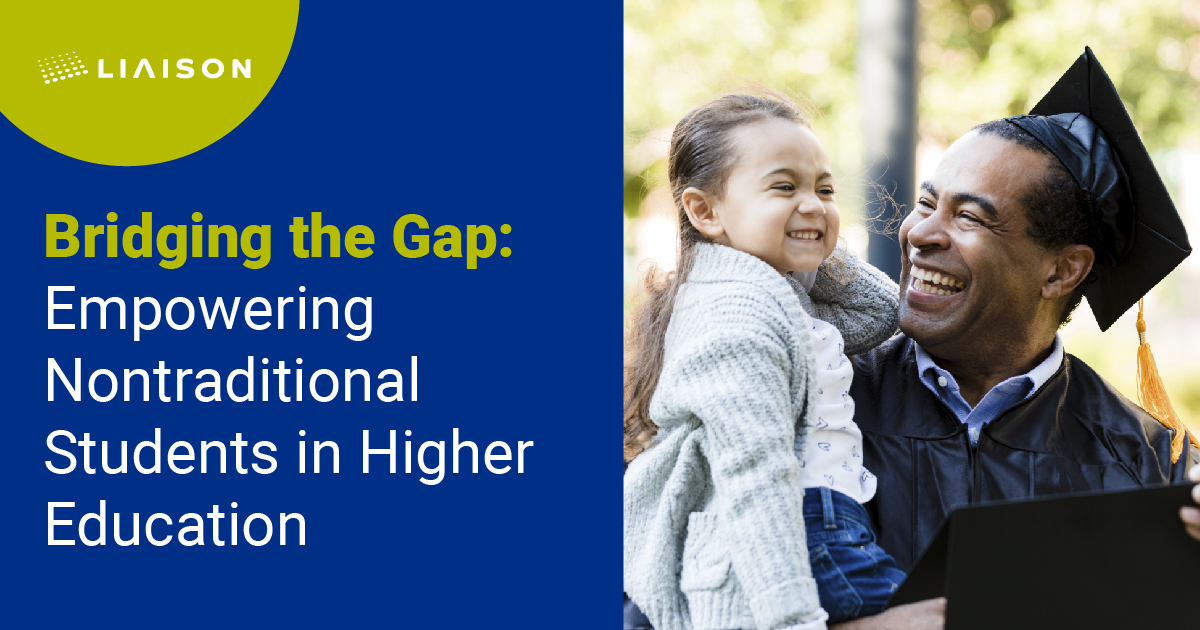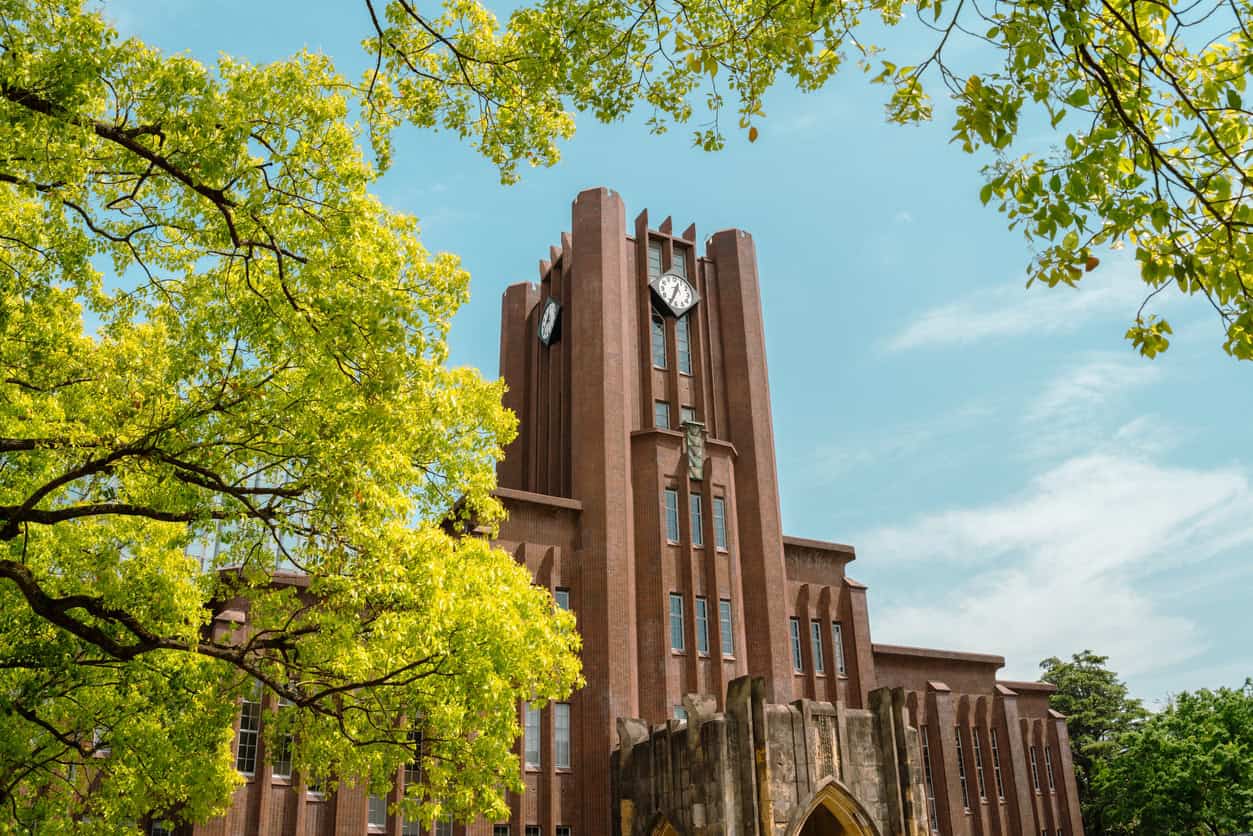Key Takeaways
- Higher education institutions are seeing an increase in nontraditional students, including adults returning to education, individuals balancing full-time work with studies, and those with family responsibilities.
- Nontraditional students face distinct barriers to student success in higher education such as inflexible schedules, inadequate financial support, and a lack of tailored advising services.
- To cater to nontraditional students, institutions should offer flexible scheduling options, practical and applicable learning programs, streamlined administrative processes, and tailored support services.
- Utilizing data-driven decision making helps institutions understand the specific needs of nontraditional students and develop targeted interventions. Tools like Liaison’s Centralized Application Service™ provide valuable insights that aid in attracting and supporting these students throughout their educational journey.
The composition of student bodies within higher education institutions is shifting significantly. Today, campuses are witnessing a rise in nontraditional students—those who may not follow the direct, just-out-of-high-school path to college. These students often include adults returning to education later in life, individuals balancing education with full-time work, or those with family responsibilities. The Lumina Foundation estimates that 37% of college students are 25 or older, 24% have children or other dependents, and 40% work full time.
As the number of nontraditional students in higher education grows, it becomes imperative for institutions to reassess and realign their strategies to facilitate these learners’ success from enrollment to graduation.
Understanding the Shift: Traditional vs. Nontraditional Students
Traditional college students are those who enroll immediately after completing high school, often with the financial and emotional support of their families and with limited obligations outside of their studies. Nontraditional students, in contrast, frequently juggle multiple life roles, which can include parenting, full-time employment, and other personal commitments. As such, they face unique barriers to student success in higher education, ranging from inflexible class schedules and inadequate financial support to a lack of tailored advising services that recognize their unique circumstances and constraints. Institutions need to understand these barriers fully to dismantle them effectively.
The key differences between traditional and nontraditional students aren’t just in their demographics but also in their educational needs and expectations, which include the following priorities:
1. Flexible Scheduling
Nontraditional students often balance their studies with work, family responsibilities, or both. Unlike traditional students, their time for classes and studying is limited by other significant commitments. As such, they expect educational offerings to fit into their busy schedules. This can include night or weekend classes, accelerated courses, or online programs that allow for asynchronous learning.
2. Practical and Applicable Learning
Many nontraditional students return to education to advance their careers or change professional paths. Therefore, they value education that is directly applicable to real-world settings. They prefer programs that offer practical skills and knowledge that can be immediately applied in the workplace. This desire also extends to work-integrated learning opportunities such as internships, co-ops, and practical projects relevant to their current or desired job markets.
3. Streamlined Administrative Processes
Given their time constraints and the potential complexity of returning to school after a significant gap, nontraditional students appreciate straightforward and efficient administrative processes. They expect clear guidance on application procedures, financial aid, registration, and advising that minimizes bureaucratic hurdles and is easily accessible online.
4. Support Services Tailored to Their Needs
Support services that consider the life contexts of nontraditional students are crucial. These include academic advising that takes into account their full schedules and commitments outside of school, career services that offer flexible hours, and counseling that addresses the specific challenges faced by adults returning to education. Additionally, services such as childcare on campus and financial advising tailored to adults who may already have significant financial obligations (like mortgages or existing student loans) can make a substantial difference in their educational experiences.
5. Recognition of Prior Learning and Experience
Nontraditional students often have considerable work experience and possibly informal education or self-taught skills. They expect that the time and effort they have invested in learning outside the formal education system will be recognized. Academic credit for professional experience, military service, or previous coursework can accelerate their progress toward a degree, making education both more affordable and timelier.
6. Community and Peer Support
Creating a sense of community among peers who share similar life stages or challenges can significantly enhance the educational experience of nontraditional students. These students often look for peer support groups, networking opportunities, and mentorship programs that connect them with fellow students who can relate to the unique challenges of balancing education with other adult responsibilities.
7. Technology-Enhanced Learning
Nontraditional students expect to utilize technology that enhances their learning experience and fits education into their lives conveniently. This includes robust learning management systems, mobile access to course materials, and technology that supports remote learning and interaction with peers and instructors.
By understanding and addressing these expectations, institutions can significantly improve the educational outcomes and experiences of nontraditional students, making higher education more inclusive, accessible, and closely aligned with the needs of all students.
Leveraging Data for Informed Decision Making
To effectively support nontraditional learners, institutions must also harness the power of data. Data-informed decision making can help identify the specific needs and success patterns of nontraditional students. By analyzing data from various points of a student’s academic journey, institutions can develop targeted interventions designed to support academic persistence and completion.
Liaison’s Centralized Application Service (CAS) serves as a crucial tool in this context. CAS simplifies the application process for students while providing institutions with rich data on applicant trends, success rates, and educational outcomes. This data is invaluable for developing strategies that not only attract nontraditional students, but also support them all the way through to graduation.
Adapting Higher Education for Nontraditional Students
The rise of nontraditional students in higher education is reshaping the academic environment. As a result, institutions must move beyond traditional models of student support to embrace more inclusive and flexible approaches. By understanding the distinct attributes of nontraditional versus traditional students, removing barriers to their success, and leveraging data for strategic decision making, institutions can ensure that all students have the opportunity to succeed. The schools and programs that do this successfully stand to gain substantially. The benefits they’ll experience include enhanced student diversity, improved completion rates, and stronger connections with the community.
Engaging nontraditional students effectively not only fulfills a vital educational mission, but also enriches the learning environment for all students. As campuses continue to evolve, the success of nontraditional students will increasingly serve as a measure of an institution’s commitment to educational equity and excellence.

Click here to learn more about becoming a Liaison CAS partner organization and using the platform to encourage greater success for nontraditional students
#Bridging #Gap #Empowering #NonTraditional #Students #Higher #Education










